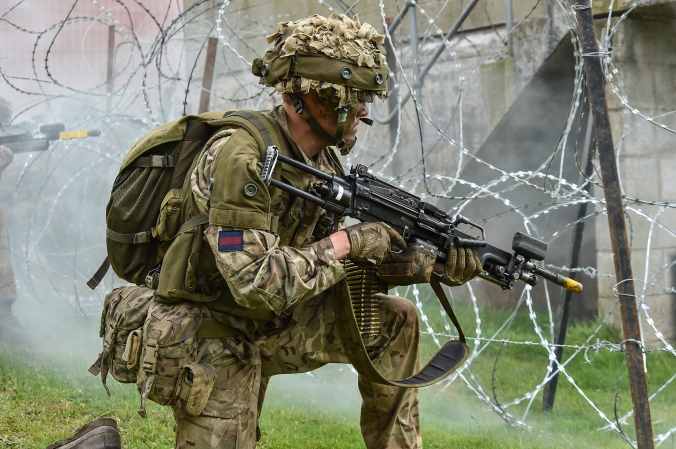(The lessons of the square range still apply)
Martial training, whether with open hands, edged, or blunt weapons, has always consisted of three elements: Shadow boxing, bag work, and sparring. These elements are given different names depending on the style of fighting and type of weapon, but they are nearly universal. Movements are practiced in the air, on a target, and finally, against a live opponent, with the first two perfecting technique until it is habit, and the third teaching problem solving.
Sparring has been a part of open handed and edged weapon training for as long as we have written records. Martialist have sparred with fist, sword, and bayonet. In the realm of firearms instruction; however, opportunities for sparring against a live opponent have always been rare.
The reason for this is for obvious, as two boxers can spar at reduced power without hurting each other, or scabbards can be placed over the bayonet, and blunted foils used for fencing, but until recently, there was no good way to safely stage a friendly gunfight. Those who would train with firearms were restricted to dry fire, target practice, and hunting of animals. It was as if a boxer was restricted to bag work and shadow boxing, and never got to face a live opponent until he stepped into the ring to fight for the title.
Sure, in the old days soldiers trained with blanks, but the lessons were more about patrolling and maneuver than gun fighting. Observer Controllers would follow the patrols and assess casualties: “Judging from the way your patrol walked into that ambush and failed to react when it was sprung, I’m going to judge that 50% of your men are casualties.” (The HBO series Band of Brothers depicts some of this type of blank fire training.)
Eventually, when systems to simulate a live fire gunfight became available, they were so expensive and rare that, if a trainee got to use them at all, they were used as a sort of doctoral thesis at the end of a long and extensive training career. This is still the way most schools operate; making their students an offer such as: “Take all twenty- six of our classes, and you can participate in the force on force lane.” However, as the cost of these systems has come down, a new school of thought has emerged that puts the student into force on force very early, sometimes only taking time to brief them on the safety rules, and no more. These systems operate with the basic notion that best way to teach someone to fight with a gun, is to have them fight with a gun. To extend the boxer analogy, it is as if someone whose only training is what he gleaned from numerous bar fights stepped into the prize ring. How a boxer who had trained only on a bag fare against the bar fighter is anybody’s guess; for what it’s worth, I would lay a slight odds on the bar fighter. However, neither of them would stand a chance against a fighter who had trained in both technique and sparring.
The first time you participate in force on force firearms training, it will completely rearrange every idea you ever had about gun fighting (at least it did mine). Gun fighting is a complex art that comprises a great many diverse skill sets. I don’t think there is any way to describe how fast the situation changes, how fleetingly the targets align with one’s point if aim, or the effect of the adrenalin dump that accompanies good FOF. To be successful, you must use stealth in combination with explosive movement, and be able to transition back and forth between the two instantaneously as the situation demands. The man who uses cover, concealment, and movement well, will usually defeat the opponent whose only skill is shooting.
When a student first experiences all of this, there is a tendency to abandon everything ever learned on the square range. Marksmanship tends to go to Hades, and students try to make up for it with volume of fire. Rather than deciding that he has not learned the lessons of the square range well enough, a student will decide that square range lessons have “no real world application”. This is a little bit like the first year philosophy student who abandons his belief in God. As the saying goes “A little philosophy inclines one to atheism, but much philosophy turns his heart back to the Almighty.” So it is with FOF training. The lessons of the square range still apply, but the student who cannot utilize them in a firefight, never really learned them in the first place. Extensive experience in FOF training will eventually reinforce the need for square range time, just as extensive study of philosophy reinforces a belief in God. Photo by Ian Griffiths/MOD
Photo by Ian Griffiths/MOD